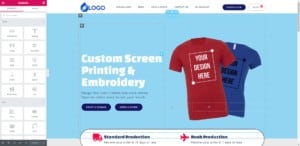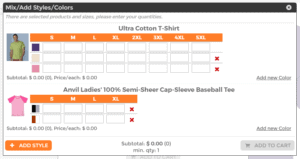
Inbound marketing is the most exciting of the new marketing concepts to have appeared in recent years. Not only that, it’s proved itself to be by far the most transformative. To call it a game-changer is an understatement. Inbound marketing puts the game in a whole different arena, subverts the old rules and invites the audience onto the pitch….but what, actually, is it? Well, to answer that question, you need to start by stating what it is not. It’s not the old-fashioned, ‘outbound’ marketing, by which marketers attempt to find customers and then hold their attention just long enough to sell them something. With inbound marketing, the aim is to earn the attention of customers, subtly helping them to find the company by building awareness and developing trust.
Today’s consumers have all the information they need about your brand at their fingertips…literally. This is true even if you have no web presence, perhaps even more so – your very absence from the online world will be seen as a sign of something lacking. ‘What are they hiding?’ ‘How can I trust this product if I can’t find any reviews?’ As a natural result, this more informed and confident consumer base feels more empowered when it comes to the decision to complete the deal. In other words, they’re not going to buy your product just because you tell them to.
In the pre-online age, television adverts would tell you what a product looked like and roughly what you could expect to pay for it. A trip to a local store would show you that item next to a variety of competing ones and a motivated sales person might manage to tease a little more commission out of the day’s work by persuading you to upgrade to a ‘premium’ brand. If you were in need of services, then the yellow pages would give you a list of local providers and successful local businesses might catch your eye if they’d paid a little more for bold type or even a couple of lines of descriptive text with the whole advert surrounded by a thick black box. You could ask a friend or relative to recommend a plumber or a mechanic but if you needed more rarefied services, such as those of a lawyer, you’d probably find yourself walking down Main Street trying to decide which brass plaque was most impressive.
…which leads on to one of the main differences in attitude between old-fashioned selling and modern online marketing. The customer is not going to be intimidated by a sales person and they’re not going to be impressed by brass plaques. The modern consumer has done their research. They haven’t just asked their brother for a recommendation, they’ve gone onto social media and asked everyone. They’ve checked with the review sites and they know whether your previous customers have been satisfied or not. For an important purchase, they may have researched your company, checking out your environmental credentials, ethical employment policies or whatever their personal concerns are. Finally, and vitally, they want to know what else is in it for them, aside from the basic purchase – not just what guarantees you will provide for the product or service but also, increasingly, what other perks they might expect to receive. Will you offer them a discount on future purchases? Perhaps you have a tie-in with a partner brand and can give them a coupon? Even if you’re not passing back something with a clear monetary value, there are still ways in which the experience of doing business with you can leave your customers with a warm glow and wanting to tell their social media friends about you. What will you do, in the terminology of the inbound marketer, to ‘delight’ them?
Many, more traditional businesses, are resistant to the idea of inbound marketing. They know how to make television adverts and they’ve transferred those same techniques to the business of online marketing. Invasive, content obscuring pop-ups that won’t seem to go away are reminiscent of the old television trick of setting the volume higher on adverts, so that you can’t escape them, even if you’ve gone into the kitchen to make coffee. Well, just as TV watchers responded to that imposition by muting the sound during advert breaks, so internet users have learned to screen out the more aggressive, intrusive forms of advertising. They won’t be bullied into paying attention and they have a vast amount of information to choose from, so they can select the narrative that they trust. They are far more likely to believe reviews and opinions that originate from amongst their social media peer group than a slick, traditional advertising campaign.
At first glance, the inbound marketing technique can seem time-consuming, complex and ultimately expensive. In reality, only the first of these is correct. Inbound marketing should be seen as a long term strategy. Any business that is truly serious about developing a successful online presence and making it work, must be prepared to invest time and effort into all of the elements of an inbound marketing campaign. These elements by themselves are not complicated – each is quite a simple process in itself. The magic lies in combining the separate strands of the campaign into an inter-connected whole strategy that is infinitely more powerful than the sum of its parts. A well thought out inbound marketing strategy will require (and deserve) a lot of commitment, but it will not require a huge financial input – certainly not in comparison to the cost of mounting a traditional advertising campaign.
One vital element of inbound marketing is search engine optimization (SEO). You need to make sure that your website will bring in the leads that you need and to do that, it needs to be found. You will need to make sure that the behind the scenes aspects of your website are in place – what keywords and search modifiers are your customers going to be using? For many businesses, it’s important to use local SEO to give potential drop-in customers a map to the premises. Make sure that the site itself is well structured, with useful links and, of course, something worth staying for, once a potential customer does click through and find your site – you need fresh content!
Adding content is, of course, where things get time consuming. The frequency at which you should add to your website will depend, to a great extent, on what business you’re in. For some organizations, this is a constant process whilst, for others, a new piece of content every couple of weeks will be enough. This need for fresh and engaging content has been one of the main drivers in the development of that relatively new phenomenon – the blog. Adding a blog to a web page can provide the perfect platform for adding new content, especially if your business doesn’t regularly bring out new products or see other changes that would be an excuse to add content to a news page. A blog also gives you a bit more latitude, in terms of what you can write about. If your business has strong local links and your customers are mostly drawn from the local area, then your blog can reflect your commitment to your community. If you offer professional advice, such as legal, financial or even medical, then you can write about the latest developments in your field. If you’re struggling to find topics that are relevant to your business but of sufficient general interest, the blog gives you the opportunity to be more creative with your subjects. The important thing is to make sure that your blog posts are relevant to your customers, even if they’re not directly relevant to your business. If you run a pet supplies business, then a blog post about your love of Chinese art may not be of much interest to your target audience but a post about efforts to save the panda is more likely to have an emotional appeal and show the compassionate side of your business. By focusing on the issues that matter to your prospective customers, rather than simply engaging in a hard sell, the blog is a fantastic tool for the inbound marketer. It’s a way of engaging with the public and attracting them to your brand, by emphasizing a mutual interest in the stories that matter to them. As with most things in life, remember that quality is the key, here, rather than quantity. If you can create great content easily and frequently, then lucky you – keep on doing it. If you’re really struggling to think of anything that will interest your customers, then perhaps you should consider outsourcing this aspect of the work to a content marketing agency. It’s better to have an occasional blog post with engaging content than daily dry status reports.
Another way to engage with the customer is, of course, in the use of social media. A Facebook page is almost a necessity these days and the other most popular platforms, such as twitter, LinkedIn, Instagram and others should also be worked into the mix, depending on the nature of the business. But social media is not just about your ability to engage with the customer – it’s the way in which many of them will be engaging with each other. That means that it’s no longer simply about the relationship between you and your customer. Now it’s about the way that your customer passes on their impressions of your brand to those in their social network. You can make use of this by asking your customers to pass offers to their friends, offering them small perks in return for ‘liking’ your page or website and engaging with them in a myriad of other ways, depending on the nature of your business.
If this all sounds as though it’s missing the point of marketing, which is to sell your product or service, well don’t worry, this is just the beginning. Once you have begun to build a relationship with your customer, or to use a common term in inbound marketing, once they have been ‘attracted’ to your brand, then they need to be converted into a follower and, ultimately, a consumer of your brand. The real currency here is contact information. If the potential customer will follow you on social media or, better still, provide you with their email in order to receive updates from you, then you can establish contact with them. It’s often necessary to offer something in return for contact information – perhaps a discount voucher or entry into a prize draw. So long as whatever you are offering is perceived by the customer to have value, then it does not necessarily require a large financial outlay. A video tutorial, access to a webinar, even just an entertaining blog may prove sufficient to make your customer willing to hand over their contact details.
Once contact has been established, you can begin the process of gently leading them towards becoming consumers of your product or service.
Finding out what engages and retains your customers’ interest is an ongoing process and one that’s at the heart of inbound marketing, which can usefully be described as a cyclical model. You need to start by identifying your target audience and learning about what approach they are likely to respond to. Once you know what makes them tick, you can start to craft a narrative to place in front of them, through whatever mix of website, blog and social media platforms is appropriate for your business but more importantly, for your audience. Once you have some data about visitors to your various platforms, analyze it – user data is vital at the early stage but also at each point after that. Are you getting to the audience you expected to? Can a significant rise or fall in visitors be put down to anything that you’ve changed or added? What can you improve on? With this data to add to the mix, you can start the cycle again, tweaking your approach and hopefully producing even better results.
If you need help or advice on any aspect of online marketing, then Web2ink Inbound is the place to start. Based in Charlotte, NC, we are web designers with expertise in creating a web presence that really works for our clients.
Share this post
Recent Posts


Websites For Sign Shops and Large Format Printers

What is CRM Software

Announcing DIY Plans

Feature Spotlight- Mix Styles and Colors
Newsletter
Related Posts


Websites For Sign Shops and Large Format Printers

What is CRM Software
Articles
What is Inbound Marketing


Websites For Sign Shops and Large Format Printers

What is CRM Software

Announcing DIY Plans

Feature Spotlight- Mix Styles and Colors
Newsletter
Related Posts


Websites For Sign Shops and Large Format Printers


